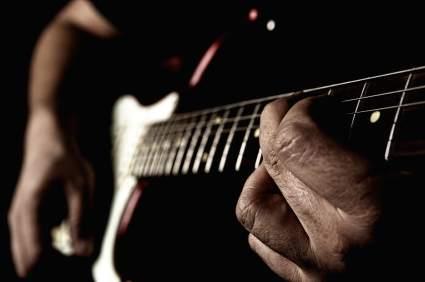
Play guitar long enough and you’ll invariably be asked if you’re a rhythm or lead guitarist. It’s a question innocently asked to determine your ability on the instrument with the assumption that rhythm players are less accomplished than lead players. Those that have played awhile, especially if you’re an accomplished player, know that this is a false assumption. The truth is, if you’re not a great rhythm guitarist you’ll never be a great lead guitarist. Grasp and command of rhythm are the essential skills necessary to become an accomplished guitarist. While this truth should be self-evident, there are plenty of players out there that not only overlook it, but fail to revisit and work on this essential component of their skillset. Rhythm guitar is a skill that must be continuously honed. Below are some suggestions to keep at the forefront of your approach to playing.
The ability to listen is first and foremost the foundation upon which solid command of rhythm rests. Even though some players exhibit an innate sense of rhythm, an internal clock if you will, it’s important to be aware that rhythm, like the perception of time can be subjective and it must be referenced to an external source like a metronome. This will help you practice reconciling and referencing your internal and external perception of time and rhythm. This is elementary for drum and percussion students. In fact, it’s very useful as a guitar player to think like a drummer, to put yourselves in the rhythm section’s frame of mind. It doesn’t hurt to make room in your study of the guitar to crack open an issue of Modern Drummer or talk to a drummer just to get their perspective on the percussionist’s approach to music and performance.
“In the pocket,” “behind the beat,” “finding the groove,” “on top of it,” “slug it” are phrases I’ve heard drummers use in order to articulate what they are trying to accomplish when they play; It’s important to understand their meaning. This awareness isn’t exclusive to the rhythm section; it’s essential to the performance, which means it should be essential to guitar players as well. When I taught beginners struggling with strumming, I would give them a shaker egg (those plastic eggs filled with birdshot) and tell them to shake along when they were just listening to music. Playing the tambourine well is not as easy as one may think. And if you’re a guitar player whose last experience with one was kindergarten, I suggest you get on one and try it out.
Finally, I often share two observations from a couple of guitar players I admire and respect. I once read an interview with Eddie Van Halen where he stated that when he’s complimented on his rhythm playing, he really respected it and knew he was talking to someone who could play. John Mayer, on Stevie Ray Vaughn’s legendary playing and tone, very astutely pointed out that it was Stevie’s timing that was so extraordinary. If you’ve ever seen Stevie Ray Vaughn “Live at the El Mocambo,” you know what I mean! If you haven’t, I highly recommend viewing this classic performance in order to appreciate what Mayer was referring to!
